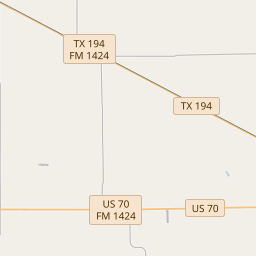Montgomery Ward Building







This commercial structure was built in 1929 for the Plainview Montgomery Ward store. Located on land owned by J.H. Slaton, Guy Jacob and others, the building housed the business for almost 40 years. The architectural style, which features detailing of glazed terra cotta and multicolored tile, was utilized in several of the company's other Texas stores. The building now serves as a reminder of Plainview's early commercial development.
Recorded Texas Historic Landmark - 1982
As one of the most visible programs of the Texas Historical Commission (THC), historical markers commemorate diverse topics in Texas history, including: the history and architecture of houses, commercial and public buildings, religious congregations, and military sites; events that changed the course of local and state history; and individuals who have made lasting contributions to the state, community organizations, and businesses.
Texas was once a part of Mexico but gained independence in 1836 after a famous battle at the Alamo.
The county was officially organized in 1888 and named after Lt. John C. Hale, a hero of the Battle of San Jacinto during the Texas Revolution. Agriculture played a crucial role in the early development of Hale County, with farming and ranching becoming the primary economic activities. The arrival of the railroad in the late 19th century further facilitated trade and growth in the region.
One significant event in Hale County's history was the discovery of oil in the early 20th century. Oil fields were found near the city of Plainview, leading to an economic boom and population growth. The discovery of oil allowed for the establishment of refineries and related industries, transforming Hale County into an important oil-producing area in Texas.
In recent decades, the economy of Hale County has diversified, with the advent of new industries such as healthcare, manufacturing, and education. The county continues to be a major agricultural producer, specializing in cotton, sorghum, and cattle ranching. Hale County is also known for its strong community spirit and has maintained its rural charm while embracing progress and modernization.
Hale County Timeline
This timeline provides a condensed summary of the historical journey of Hale County, Texas.
- 1876: Hale County is founded as a part of the Texas Panhandle.
- 1881: The first permanent settlement, Plainview, is established.
- 1888: The Santa Fe Railroad reaches Plainview, boosting the town's growth.
- 1891: Hale County is officially organized.
- 1892: The first courthouse is constructed in Plainview.
- 1907: The Discovery Oil Well is drilled, leading to an oil boom in the county.
- 1920: The town of Hale Center is incorporated.
- 1930s: The Great Depression hits Hale County, causing significant economic hardship.
- 1941: United States enters World War II, causing Hale County to experience an increase in agricultural production.
- 1950s: The introduction of irrigation systems revolutionizes agriculture in the county.
- 1980: Hale County experiences an economic downturn due to a decline in the oil industry.
- 1990s: The establishment of wind farms begins to diversify the county's energy sources.
- 2008: Hale County suffers from a severe drought, affecting agricultural production.
- 2010s: Renewed focus on economic development and tourism to boost the county's economy.